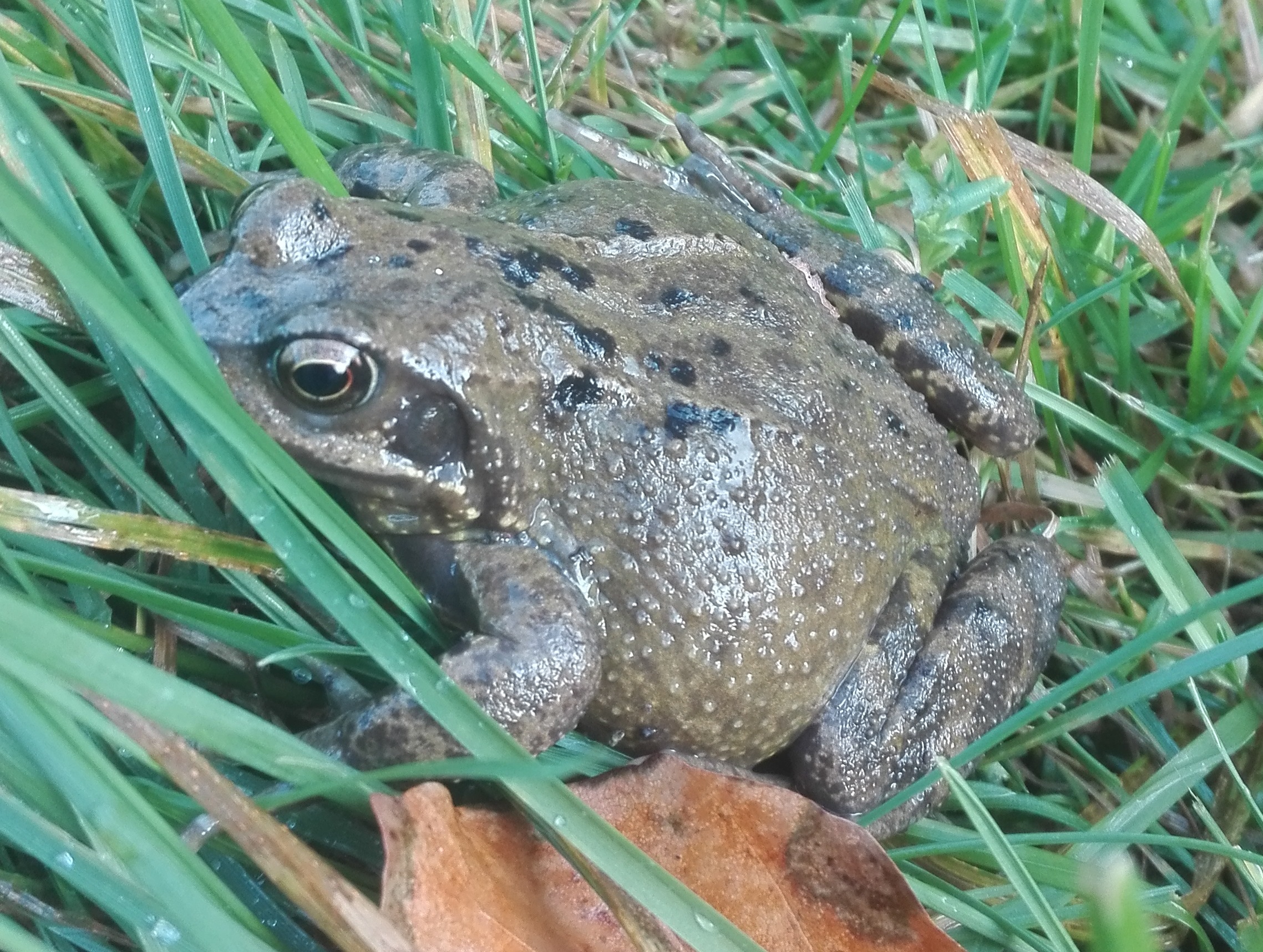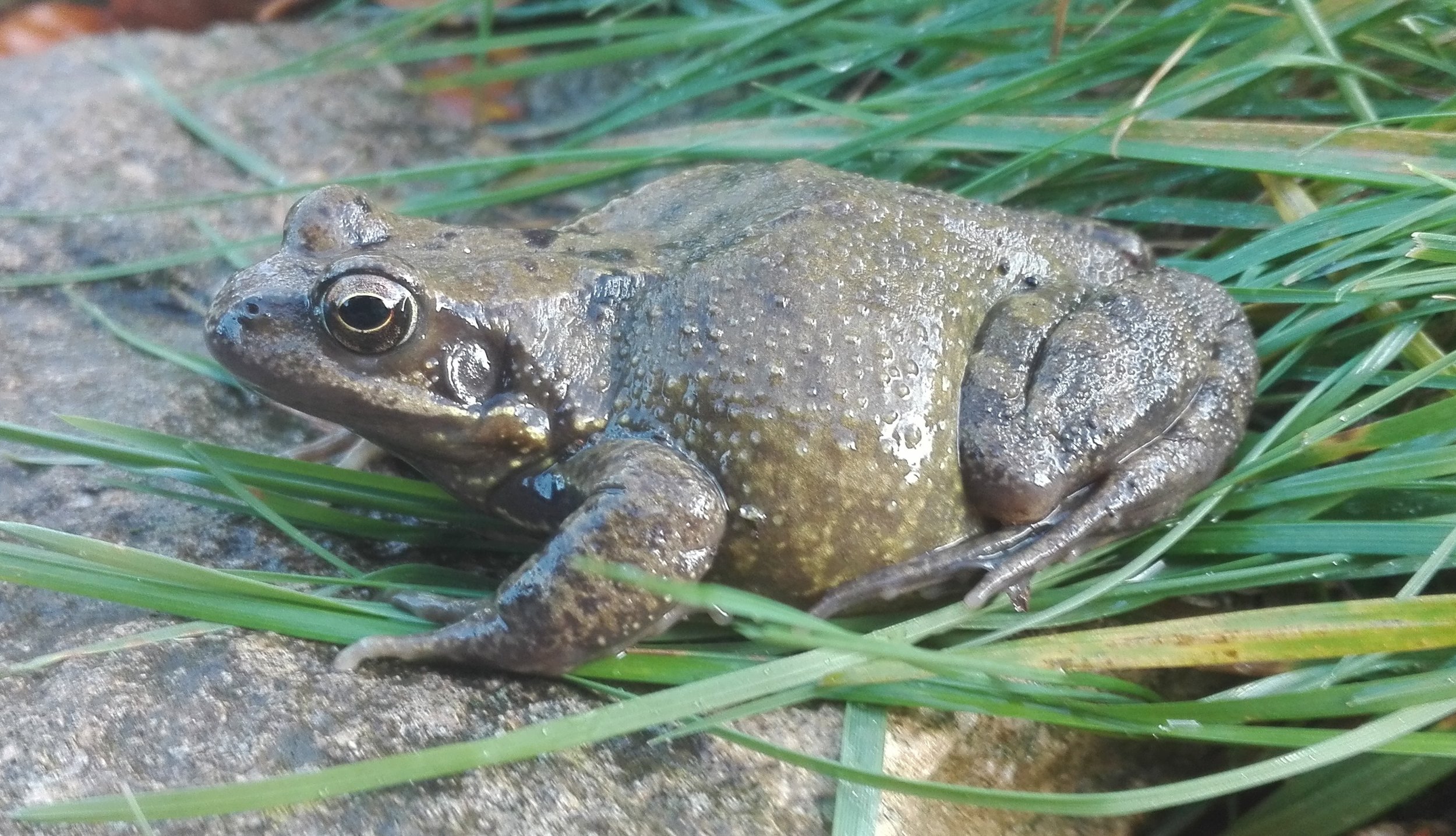Fat Frog
/10 November seems quite late to find a frog out and about in the garden, but what struck me about this one is how fat it is. My first thought was that frogs must put on weight to get through the winter, but researching online it appears that while they do build up an energy store, mostly this is in the form of glycogen (carbohydrate) stored in the liver, rather than a fat deposit. Certainly glycogen is a more ready source of energy, which requires less oxygen to deploy - which is useful if you are hibernating at the bottom of a pond absorbing what little dissolved oxygen there may be through the skin, as many frogs do.
Hopefully the frog was healthy - it certainly seemed it. So, perhaps it is an adult female with developed eggs ready for the spring? Finding out online when female frogs develop their eggs was surprisingly difficult, but a detailed article on toads indicated that in toads mostly the eggs are developed during the late summer, with the weight of the ovaries reaching 12-15% of body weight during August-September. Assuming it works the same with frogs, and it does make sense they they would mostly develop their eggs prior to shutting down their metabolism for hibernation, then I hope this is a gravid female ready to spawn in my pond in March/April.




